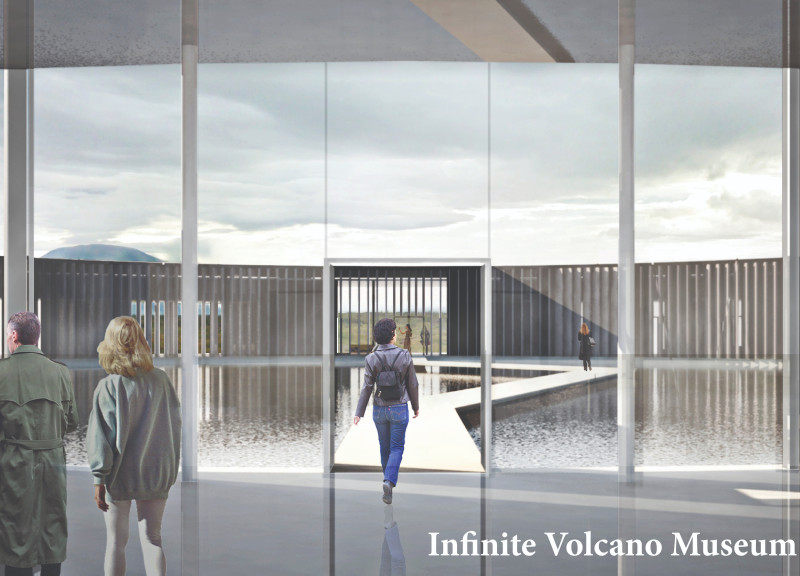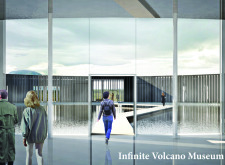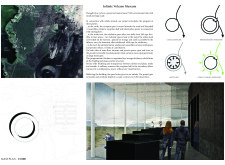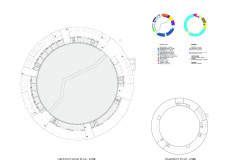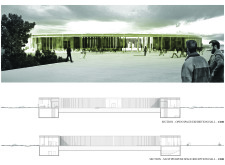5 key facts about this project
The museum comprises a reception area, exhibition spaces, and administrative offices, strategically arranged to facilitate the flow of visitors. The reception area, located at the entrance, includes a café and an information center that welcomes visitors and introduces the themes of the exhibits. The two primary exhibition halls feature flexible layouts, enabling diverse displays and multimedia installations about volcanoes and geothermal phenomena. Administrative spaces are situated with views overlooking Lake Mývatn, fostering a connection between the work environment and the surrounding landscape.
Architecturally, the design emphasizes integration with the site. The circular structure echoes the form of a volcanic crater, reinforcing the thematic elements of the museum. The extensive use of glass in the facade allows for panoramic views, minimizing barriers between the interior and the exterior. This transparency not only enhances aesthetic appeal but also promotes natural lighting, reducing energy consumption.
In terms of materiality, the project employs concrete, glass, wood, and metal, which collectively contribute to a modern aesthetic while reflecting the local geological context. Concrete provides the structural framework, while textured finishes mimic the rugged landscape. The selection of wood for interior elements adds warmth, creating a welcoming atmosphere for visitors.
Sustainability is a core principle embedded in the museum's design. The reflective pond surrounding the building serves multiple functions, including providing natural cooling and enhancing the overall visual experience. This water feature highlights the relationship between the museum and its natural environment, drawing attention to the concepts of harmony and balance.
The Infinite Volcano Museum is distinguished by its cyclical design, which emphasizes the interconnectedness of volcanic activity and the landscape. The architecture fosters a unique visitor experience, positioning the museum as not just a place for learning but also as a space for contemplation and connection with nature.
For those interested in exploring architectural details, further investigation into architectural plans, sections, and designs will provide a comprehensive understanding of the project. Consider reviewing these elements to gain deeper insights into the architectural ideas that inform this innovative museum design.


